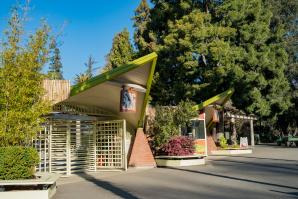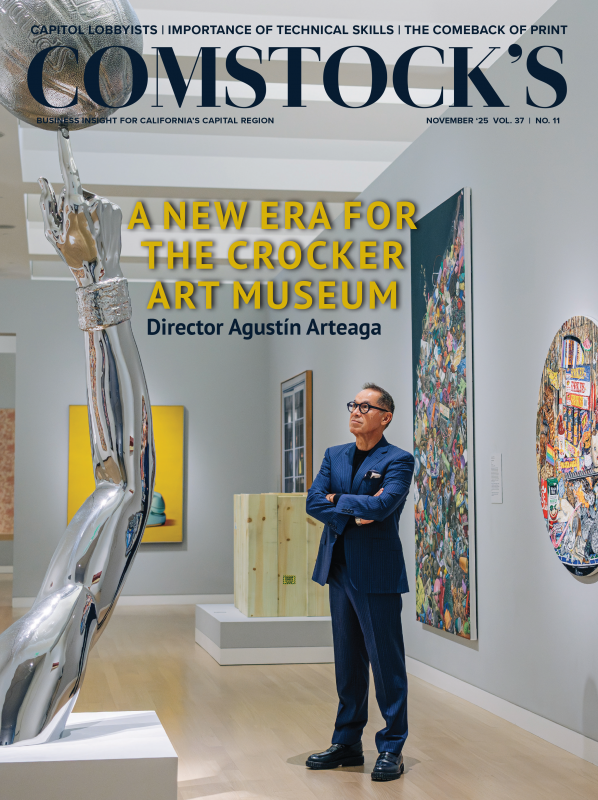As you know, the expression “the elephant in the room” refers to something that’s obvious but which no one will talk about. Let’s be honest. Every family has had that moment when they send their teenager to the store with a list and some cash, and the kid comes back with half the groceries and zero change. Or, it could be when we go to a dinner party at someone’s home with the knowledge that behind our hosts’ pained smiles, they’re going through a financial crisis.
When it comes to our tax dollars, the stakes are a little higher — and the “missing change” is a lot harder to laugh off. That’s the real elephant in the room, isn’t it?
But the biggest, most bumbling elephant in the room these days may be summarized in that famous line from “Jerry Maguire,” the 1996 Tom Cruise movie: “Show me the money!” As an example, I’m talking about the money — billions of dollars, actually — that our state poured into a high-speed rail system unlikely to be built in many of our lifetimes.
According to a U.S. Department of Transportation report from this past July, “After 16 years and roughly $15 billion spent, not one high-speed track has been laid by the California High-Speed Rail Authority.” Actually, some minor work has been done — but it’s the equivalent of pounding a few stakes into the ground and saying you just built a house.
Related: Will the Central Valley Ever Get High-Speed Rail?
Where did all that money go? There’s no train, but we all certainly got taken for a ride. As one of our editorial board members suggested recently, the project represents “the perfect example of how difficult it is to do big things in California, other than professional sports venues.”
Now take homelessness. It’s a human tragedy, to be sure. But it’s also a big business problem and a visual blight both rolled into one. California spent $24 billion over five years trying to fix it, but a state audit says we didn’t even track where the money went or if it helped. Depending on who you ask, it’s suggested that homelessness shot up by 67 percent in 2019-2022 (which I instinctively believe) but dropped by 29 percent in 2024 (huh?). Regardless, we’re still No. 1 in the nation for homelessness. So, where did that $24 billion go? I hope it found a nice home, because few others did.
Related: Perspective: The Ever-Growing Sacramento Homeless Crisis
Speaking of things that make you scratch your head, why is it so tough for oil companies and California regulators to get along? We’re about to lose two refineries, which means we’ll lose 17 percent of our oil refining capacity. Translation: Gas prices will be going up — again. We already pay more at the pump than just about anyone else in the country (Hawaii and Washington come close, but we’re No. 1). How does making it harder for refineries to operate help anyone?
Let’s not forget health care. We all know the system is broken. Prescription drugs cost four to 10 times more in the U.S. than in other countries (for the same thing), and doctors are drowning in paperwork. Billions pour into nonprofits searching for cures, but where are the results? Maybe it’s time for a total reset — start from scratch and build something that actually works.
Another elephant in the room is crime. Why can’t we solve this issue? Why do many states care more about the rights of criminals than their victims? When caught, why are criminals being let out immediately to continue doing what they’ve been doing? According to a variety of studies, California’s overall violent crime rate increased by some two percent — from nearly 485 crimes per 100,000 residents three years ago to 503 the following year. That doesn’t seem to be a big jump, but I am doubtful all statistics are being counted. And what about the theft figures? We saw a jump in violent crime in the days of COVID for sure — our violent-crime rate is still up by 15.4 percent compared to only six years ago.
Related: Stolen Business: Sacramento-area businesses grapple with retail theft
Recently, I read about Maryland’s StateStat program (now called the Performance Improvement Office). Imagine this: a government that tracks its own performance in real time — no more waiting until the budget deadline to see what’s working and what’s not. They use data to keep tabs on everything from crime rates to construction projects. The result? More accountability, less waste. Wouldn’t it be nice if California took a page from Maryland’s playbook? I like that idea a lot!
What do you think?
Winnie Comstock-Carlson
President and Publisher
–
Stay up to date on business in the Capital Region: Subscribe to the Comstock’s newsletter today.
Recommended For You

To Halve or Not to Halve, That Is the Question | Opinion
FROM THE PUBLISHER: Reflections on the perennial question of dividing California
For 175 years, from California’s admission into the U.S. until now, it sits as the fourth largest economy in the world. More than 220 attempts have been made to divide our state into two, three and even six states. The various reasons have included its sheer size and its presumed ungovernability.

Public Media and the Public Will | Opinion
FROM THE PUBLISHER: Both Capital Public Radio an KVIE have demonstrated determined resiliency in the face of funding cuts. This reflects an admirable pliability coupled with toughness on the part of both stations — and says something very positive about the Capital Region, which is stepping up to support them.

Some Midsummer Night’s Dreams Are Better Than Others
FROM THE PUBLISHER: While the actual, astronomical middle of summer is August 7, the days surrounding it may still retain that hazy, lazy and magical quality Shakespeare celebrated in his lighthearted “A Midsummer Night’s Dream.” I’ve lately been finding that some of my dreams for this region and state are leaving me, if not literally sleepless, at least mentally and emotionally tossing and turning.

A Zoo Too Far? Maybe Not
FROM THE PUBLISHER: The on-again/off-again saga of relocating the Sacramento Zoo from its longtime William Land Park location to the city of Elk Grove, a little under 13 miles away, had seemed like an idea whose time, available acreage, freeway access and enthusiastic support had come. Then it seemed like it hadn’t, and the project was unceremoniously killed. What happened?





